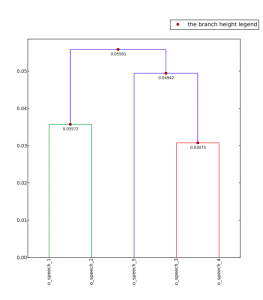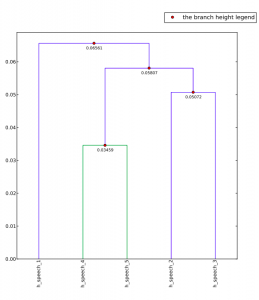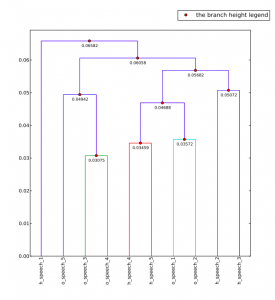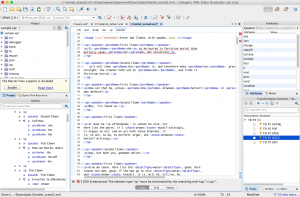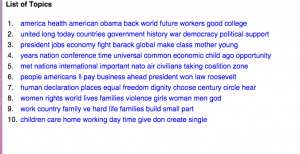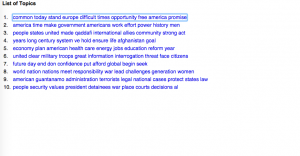Allie O’Connell
May 1, 2016
A Final Reflection
Throughout the semester, I have struggled, grown, and most importantly- learned in this class. While learning about what a corpus was, and actually creating one myself, the first and foremost important task was creating one that had actual meaning. With the upcoming presidential election, I thought it would be interesting to create a corpus distinguishing the differences and similarities amongst the political speeches of females and males. I chose to use speeches from Hillary Clinton and current president, Barrack Obama. I led my exploration by always reverting back to my essential question- “What differences and similarities do political speeches have amongst men and women?” As simple as a question this may be, it allowed me to stay on task and truly unveil some interesting information.
In the beginning of the course I focused heavily on the construction and cleaning of my corpus. I used five speeches from Obama and five from Hillary. With the use of Voyant and Antconc, I began my endeavor in starting to identify the commonalities and distinctions between their speeches. I was first drawn in by noticing frequencies and the use of the word women and how it different amongst Obama and Hillary. Voyant was the gateway to my investigation leading me to further explore this notion in and Antonc. I was able to make some valuable distinctions between how Hillary addresses the people as whole, and Obama tends to refer to them as “men and woman,” subconsciously separating himself from what used to be a minority group. Additionally, the few times Hillary uses the phrase, she says “women and men,” subconsciously putting woman first to establish power amongst woman. Obama also doesn’t use the word woman at all unless he’s distinguishing the people, whereas woman is one of the primary subjects in Hillary’s speeches. This is a natural result being as though Hillary is a woman and these are issues not only personal to her, but also a significant part of her campaign as she Is trying to appeal to female voters.

Obama:

Hillary:
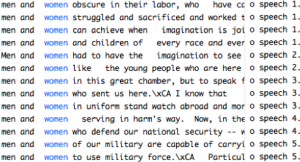
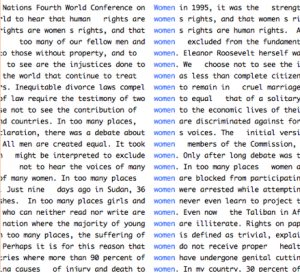
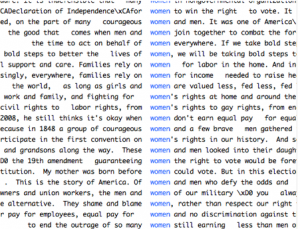
As we progressed throughout the semester I went onto work with jigsaw. I continued my research on the use of women focusing on Hillary and Obama’s lack of the use. By making a word tree I was able to identify the context in which Hillary was using the word women. She often discusses “women’s rights at home and around the world,” and “women who are raising children on minimum wage” for example. All very important issues which she emphasizes repeatedly. Again, an inherent result to gender differences and issues personal to each political figure.
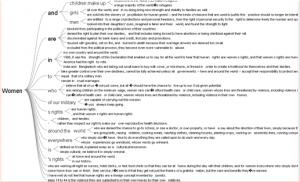
Working off of my new information that I gained from Jig Saw, I then started working with Mallet and topic modeling. Rather than giving me the context, this platform outlines specific topics and themes of discussion between Hillary and Obama. Going along with previous patterns, Hillary is again discussing things like woman’s rights, children, and family. On the other hand, (as seen below), Obama focuses more on future, the economy, and security. It is important to also acknowledge that my corpus only has five speeches for each Obama and Hillary, so this may not be an accurate representation of all their speeches. But as a whole, assuming it was accurate, these differences in speeches, could help make helpful assumptions to why Obama won the election and Hillary did not.
Obama:
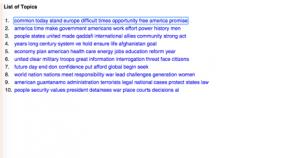
Hillary:
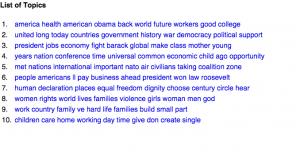
The next platform I used was Alchemy. With Alchemy I was able to perform sentiment analysis on my corpus, detecting general moods and tones for each political figure. In one of Ramsay’s readings, he asks, “Who decides what sentimentality is (Ramsay)?” Moreover, even though Alchemy can help me decide and uncover certain sentimentalities, it is also an arbitrary process. Because it is a computer doing this and words and emotions are easily misinterpreted and can’t be measured statistically like words numbers for example, so there is a lot of room for a miscalculation by the computer. This was really emphasized to me in class when we did the Gettysburg address exercise. In this exercise, we had to manually decide which words would go in which category. With that being said, the entire class had different results, and this just goes to show how truly arbitrary some of these processes are and we can’t always count on the computer to give us a one hundred percent accurate result.
As you can see below, Hillary has a fairly even distribution amongst her tones between mixed, neutral, positive, and negative. On the other hand, we can see that Obama’s is overwhelmingly unevenly distributed. He has a small amount of subjects he talks about neutrally and mixed, and even smaller amount positive, and a very large amount of subjects that he speaks about negatively. His acknowledgement of all the negative problems in our country, could have been one of the reasons that he won the election. By identifying all the problems, the population could assume that he is striving to make a difference. I can’t really assume that all woman political figures tend to speak in a more positive tone than male political figures, but this would be a really interesting idea to look into.
Hillary:
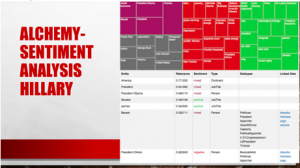
Obama:
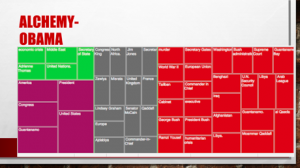
Evidently, through out my exploration of my corpus, I have been able to gather some really useful information that helped me come to very important conclusions as to how woman and men political figures differ in addressing the country and gender roles. Additionally, I was able to identify some key topics that males and females tend discuss and just as importantly, the tone and mood in which they discuss it. Pennebaker says, “The precise words you used to communicate your message revealed more than you can imagine (Pennebaker).” And this conclusion couldn’t be more true as seen in my results. For examples when Obama says, “Men and Woman,” he isn’t just addressing our country, but instead, subconsciously, saying so much more. He is splitting the population in to two groups and putting one gender before the other. He is acknowledging the difference and almost inequality amongst men and woman. Furthermore, I have learned so much through out the semester, and could truly spend a life time exploring the differences and similarities in my corpus as well as my research question. This semester triggered my interest in further exploring my research question and continuing to notice the importance in diction and moods not just in texts, but in everyday life.
Bibliography
Pennebaker, James W. The Secret Life of Pronouns: What Our Words Say about Us. New York: Bloomsbury, 2011.
Ramsay, Stephen. Reading Machines: Toward an Algorithmic Criticism. Urbana: U of Illinois, 2011.
